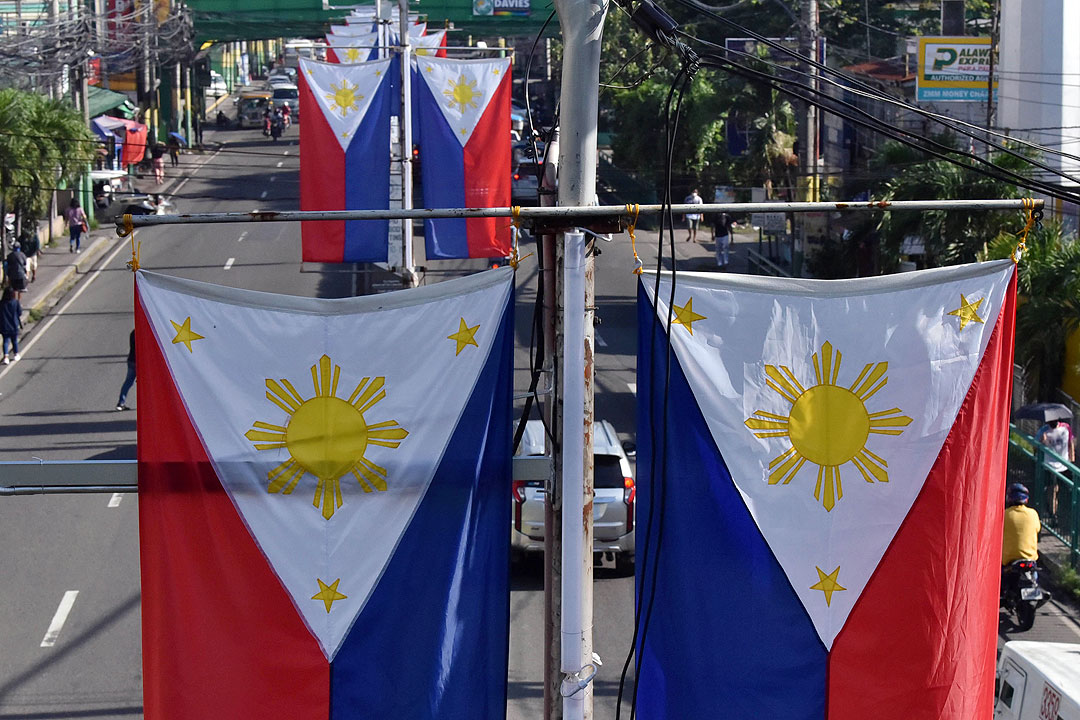Foreign chambers targeting $128-billion investments by 2030

Revin Mikhael D. Ochave, Reporter
THE JOINT Foreign Chambers of the Philippines (JFC) is now targeting to generate $128 billion in foreign direct investments (FDIs) in the Philippines by 2030.
“We set the target to $50 billion (in 2020) and now it’s at $78 billion. So we have raised it. Make it a total of $128 billion (target) by the end of 2030,” Ebb Hinchliffe, American Chamber of Commerce of the Philippines (AmCham) executive director, said during a press conference in Makati City on Thursday
According to Mr. Hinchliffe, the JFC is banking on more investments in renewable energy, agriculture, and manufacturing to reach its 2030 target.
He said the target will be achievable especially with the passage of laws amending the Public Service Act (PSA), Retail Trade Liberalization Act (RTLA), and Foreign Investment Act (FIA).
The law amending the PSA effectively allows foreigners to fully own public services such as railways, telecommunications, shipping, air carriers and subways.
“Energy will be a big part. I know there is a lot of interest on the energy side especially as we shift away from coal to renewable energy. I think the recently issued implementing rules and regulations (IRR) on renewable energy (RE) is bigger than the PSA,” Mr. Hinchliffe said.
The Department of Energy (DoE) last month issued a circular amending the IRR of the Renewable Energy Act of 2008 to allow 100% foreign capital in RE projects. Section 19 of the IRR had previously limited foreign ownership of RE projects to 40%.
The DoE earlier said the circular now paves the way for foreign nationals and foreign-owned entities to explore, develop and use RE resources in the country such as solar, wind, biomass, ocean or tidal energy.
“Manufacturing is coming. I think there will be more investments in the semiconductor and electronics field. We’ve learned our lesson on chips. Agriculture is a tremendous opportunity especially on technology and software to help farmers increase productivity. Infrastructure also. We have a lot of infrastructure projects being done,” Mr. Hinchliffe said.
In terms of projected job generation from these new investments, Mr. Hincliffe said that it may vary depending on the sector.
“I think it’s just about the same ratio. It depends on the sectors. We saw a lot of foreign investment into the business process outsourcing (BPO) industry. And what we need now is an investment into the manufacturing sectors,” Mr. Hinchliffe said.
Lars Wittig, European Chamber of Commerce of the Philippines (ECCP) president, said recent economic reforms would also attract more investments into the Philippines.
“It should also be mentioned that the game-changing reforms that we have seen within the last 18 months affecting big investment industries, and the most recent taking effect also this month, the IRR regarding sustainable energy, these will result in billion-dollar investments from Europe alone,” Mr. Wittig said.
“We believe that a highly experienced and competent economic team is in place and we trust they will manage appropriate interventions to influence inflation, supply chain blockages, and similar major challenges and headwinds to economic growth,” he added.
Bradley Norman, Australian-New Zealand Chamber of Commerce Philippines, Inc. (ANZCHAM) vice-president, said the JFC is optimistic of the economy’s recovery.
“We are optimistic with respect to the performance of the Philippines and that optimism hasn’t changed…We still see that the Philippine economy is going to grow very strongly,” Mr. Norman said.
The Philippines’ gross domestic product (GDP) rose to 7.6% year on year in the third quarter, bringing the nine-month GDP growth to 7.7%. Economic managers are confident GDP growth will exceed the 6.5-7.5% target for this year.
“It will encourage FDIs and of course they will as well for employment. Just how much employment and how that employment relates to the FDI figure is really something that you can’t calculate. We’re very positive that the Philippines is heading in the right direction,” he added.
MAHARLIKA FUND
Meanwhile, several JFC members said that they are neutral about the lawmakers’ proposal to create a sovereign wealth fund called the Maharlika Investments Fund (MIF).
Mr. Wittig said that the JFC is monitoring the developments on the fund, adding that they are waiting on further details regarding the proposal.
“(We are) neutral for now. We are monitoring it. We are learning more. We don’t have many details yet. It’s a big issue with a few details on the table,” Mr. Wittig said.
Mr. Norman added that the ANZCHAM supports the proposed creation of the MIF if it would spur more opportunities for the mining industry.
“From our point of view, we are very supportive of mining and if a sovereign wealth fund being set up would create further mining opportunities, then it’s something that we would look at,” Mr. Norman said.
Mr. Hinchliffe added that he is still uncertain on the importance of the proposed sovereign wealth fund.
“I don’t know how necessary it is in the Philippines or how it is going to work,” Mr. Hinchliffe said.
On Tuesday, the House Committee on Banks approved “in principle” House Bill No. 6398 seeking to create the sovereign wealth fund.
Sovereign wealth funds are usually funded by proceeds sourced from commodity exports such as oil.
JFC members include the AmCham, ANZCHAM, ECCP, Canadian Chamber of Commerce of the Philippines, Japanese Chamber of Commerce of the Philippines, Korean Chamber of Commerce Philippines, and the Philippine Association of Multinational Companies Regional Headquarters, Inc.
